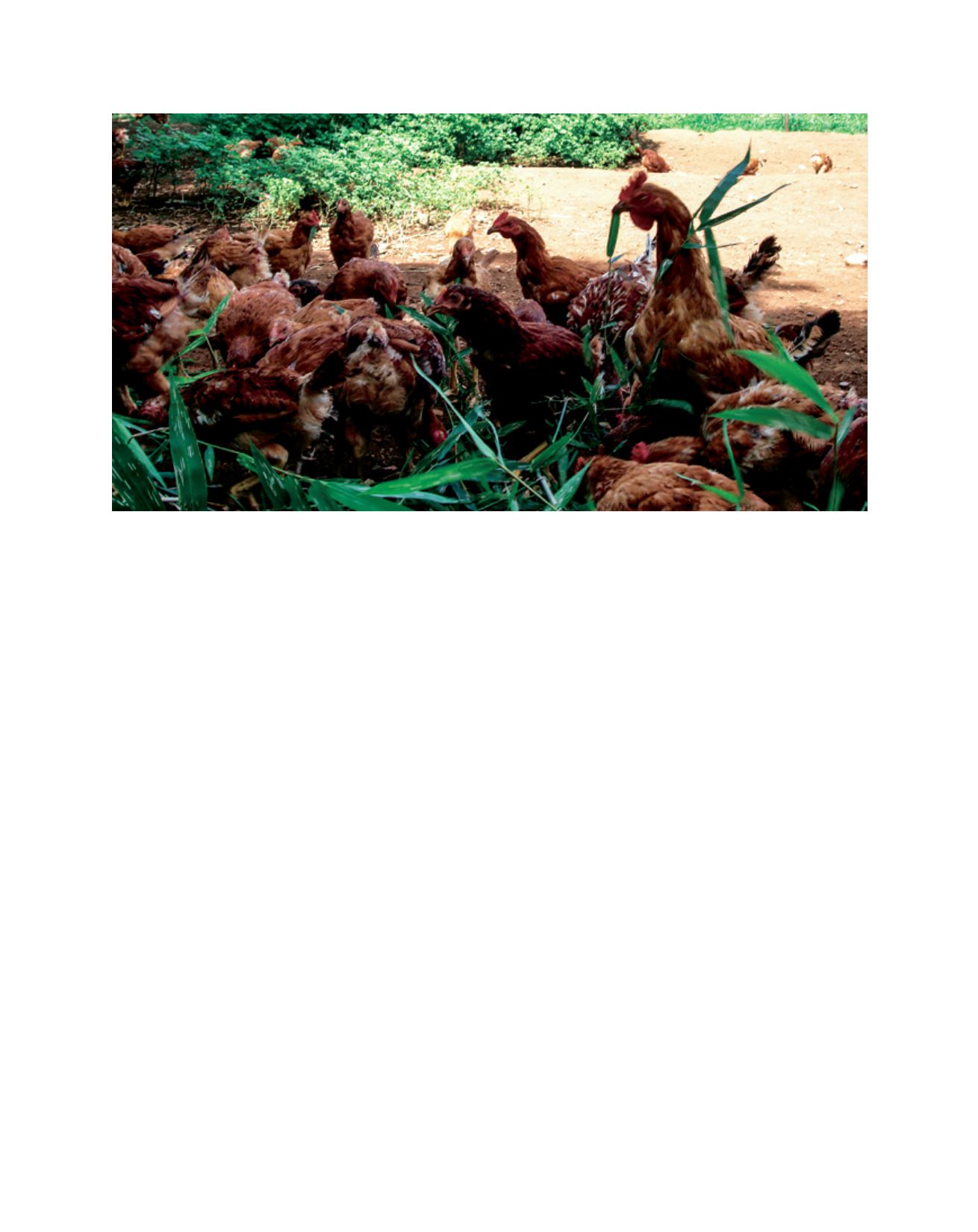

[
] 116
Assuming an average of 145 tons per hectare of growing stock,
the biomass accretion to the soil from leaf fall over the year
could range from 14.5 to 29 tons per hectare. This leads to
incremental year-round organic carbon accretion to the soil,
which is fundamental for soil health, water holding capacity
and fertility. Although leaves represent only around 10 per
cent of total plant biomass, their high nutrient concentration
makes them a major sink for nutrients, representing 37 per
cent, 23 per cent, and 20 per cent of total nitrogen, phospho-
rus and potassium respectively in bamboo.
A second source of organic carbon and nutrients is the
rhizomes and roots. Bamboo grows only in the topsoil
(commonly 50-75cm deep) and hence benefits this economi-
cally important soil layer. It has an elaborate rhizome, root,
and root hair system that sequesters 31 per cent of the
total biomass with 69 per cent being in the poles (culms),
branches and leaves. Of this below-ground biomass, 34 per
cent is due to rhizomes and 66 per cent to roots in clumping
bamboo species.
A third key strategy is to secure better returns on rural
savings. Rural women are the backbone of rural savings.
Poor rural women incrementally build up a corpus of savings
through self-help groups, savings and credit cooperatives.
While savings are built up, there are few productive and
low-risk investment opportunities. The cooperatives mostly
lend at 6 per cent interest for the commodity trades they
are involved in, which is the return the women receive after
deducting costs. In comparison, inclusive social enterprises
can offer better returns since they currently source working
capital (debt) at 16 per cent interest, which benefits only the
financing agencies. On the other hand, if the rural women’s
cooperatives would lend to them, then they would earn an
additional 10 per cent.
There is a lot that rural savings and investments can do for
the communities themselves. For example, an HHC enter-
prise can be set up by 12,000 women, each contributing
Rs120 (US$2), to a total of Rs1.44 million (US$24,000). The
intrinsic risk to a single woman is low since Rs120 is about
what they earn in a day in India. The women would thus have
shares in the enterprise and get dividend income, and further
benefit by selling their HHC to it.
A novel NGO-community-professionals partnership
(NCPP) concept has also been developed and implemented in
two enterprises, one in Tanzania and one in India. It is based
on the healthcare model where the hospital/clinic-doctor/
nurse-patients are the key stakeholders and investments are
made into the entire system. Likewise for the development-
care ecosystem, enterprises set up on the NCPP model would
have diversified equity to reduce risk and make development
more sustainable. The proportion of shareholding in NCPP
could be approximately 30 per cent from the NGO, 30 per
cent from the Community, 30 per cent from development
professionals (such as those in the NGO), and 10 per cent
‘sweat equity’ for technical assistance.
The robust field-validated initiatives and strategies discussed
above are hugely scalable and replicable around the world. In
India one key modality is the many large NGOs, which grew
mainly during the heyday of microfinance with outreach to
tens of thousands of rural households. Such NGOs offer an
opportunity to mainstream bamboo growing, agribiomass
briquetting and power production, and HHC, including
leveraging their communities to self-help by investing in the
processing enterprises themselves through the NCPP enter-
prise model. Together, these would not only enhance the
resilience of poor rural households but also greatly enhance
their income and raise the quality of life.
Chickens eating bamboo leaves in the Philippines
Image: Carmelita Bersalona, InHand Abra Foundation
D
eep
R
oots
















